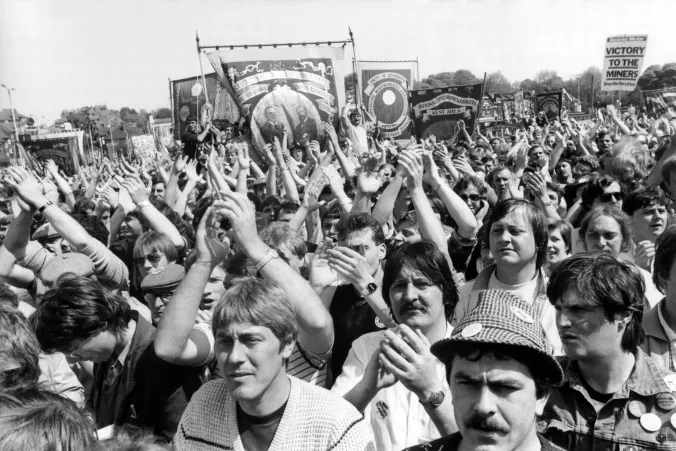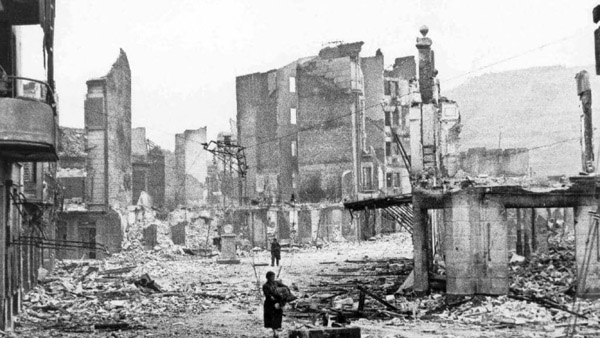Ciaran Mulholland
On March 6th, 1984, the great miners’ strike began. For a year 140,000 members of the National Union of Mineworkers (NUM) were engaged in a titanic battle with Margaret Thatcher’s Tory government and the full force of the state.
Ultimately, they went down to defeat, but it was an honourable defeat. It was a dispute that would have been won were it not for the betrayal of the right-wing trade union and the Labour Party leaderships.
The miners’ strike was deliberately engineered by the Tory government. They saw the NUM as the backbone of the labour movement, and rightly so. The NUM had inflicted defeats on Tory governments in 1972 and 1974, effectively bringing down Prime Minister Edward Heath in the latter case. For a decade, the ruling class made their plans, determined that they would not be defeated for a third time. Indeed in 1981 they backed away from a possible confrontation, judging that the time was not yet right.
In 1979, the Thatcher government began to plan for the ultimate privatisation of the coal industry. The Coal Industry Act (1980) replaced production targets with financial targets. The financial targets were set so high that they could only be met by closing ’uneconomic’ collieries. The Act was intended to make the industry more attractive to private investors.
The Thatcher government implemented the Ridley Report (1978) to prepare for a dispute with the miners. Coal stocks were increased, power stations were converted from coal firing to oil firing and coal imports were increased. Transport companies were encouraged to employ non-union drivers. Benefits were cut for strikers and their families. A special mobile squad of police to deal with picketing was created.
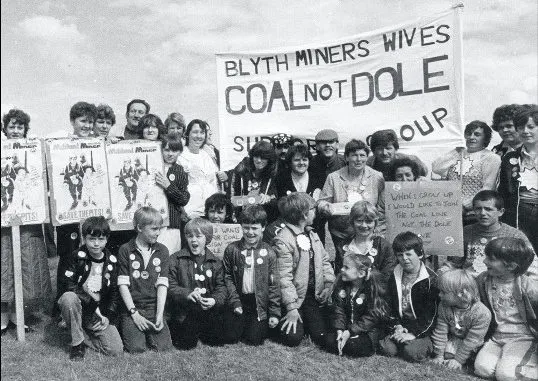
In September 1983, Ian MacGregor was appointed as chairman of the National Coal Board (NCB). MacGregor was noted for his anti-union attitude during his career in America. Prior to joining the NCB, he had helped to cut jobs at British Steel — a process that reduced the workforce by 100,000.
Cortonwood Colliery: The Strike Begins
Strike action was finally provoked by the NCB announcement on 1 March 1984 that Cortonwood Colliery in Yorkshire was to close and that 20 other pits and 20,000 jobs were on a hit list.
The Yorkshire miners’ response was immediate and within six days the strike had spread nationally. Events unfolded rapidly. On 6th March Yorkshire miners called an indefinite strike, on the 7th Scottish miners came out and on the 9th Durham and Kent miners joined the strike.
Other areas responded more slowly. Wales, for example, initially voted to stay in but to respect picket lines. Very soon, however, the South Wales area did come out and were at the forefront of the strike until the very end.
The key early issue was persuading the Notts miners to strike. On 12th March flying pickets arrive in the Notts coalfield. Over the following days a minority of Notts miners responded to their call but a majority did not. On the 15th a flying picket David Jones was killed on picket duty at Ollerton Colliery when he was hit on the head by a brick and on the same day the Notts leadership called on their members to strike.
Support from other unions was of vital importance. On 22nd March the power unions, controlled by the right, advised their members to cross NUM picket lines. In contrast the rail unions (NUR, ASLEF and TSSA), the Transport and General Workers Union (foreunner of Unite) and the Iron and Steel Trades Confederation (ISTC) agreed to block all coal movements a few days later. Within a day steel union leader Sir Bill Sirs reneged on his pledge, however. Rank and file railwaymen and seamen remained supportive throughout the strike, often putting their own jobs at risk.
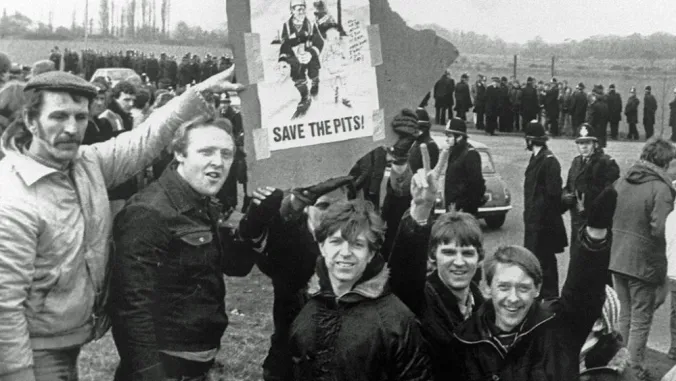
Controversy over national ballot
On 5 April the Notts miners voted against joining the strike. At this time there was a fierce debate about whether a national ballot should be called. A national delegate conference voted against a national ballot accepting that a majority of miners had actually voted for the strike at pithead meetings.
Militant (forerunner of the Socialist Party) maintained a united front with the miners during this period since the lack of a ballot was being used by the right-wing to undermine the strike. But after the strike we pointed out that, because of the way the issued was used to cut across the miners’ struggle, a ballot should have been called, and would have delivered a clear mandate for strike action.
This does not mean however that there was anything undemocratic about the conduct of the dispute at this time. The miners had their say at pithead meetings. Once a majority were out the Notts miners should have supported their call. A national ballot would have helped to defuse criticism from the press and would have helped persuade the Notts miners to come out. It would not have won the support of the press, prevented the plotting of the working miners groups (scabs directly organised by the ruling class) or encouraged the right wing leadership of some unions or the Labour Party to provide real support to the miners.
Despite the betrayal of Labour Party leader Neil Kinnock the strike received massive support from the working class. A MORI poll showed 68% were behind the strike in April 1984. On a number of occasions opportunities were missed to open second fronts against the Tories. In May, for example, the rail unions NUR and ASLEF accepted an improved pay deal worth only an extra 0.5%. A determined stand alongside the miners would not only have bolstered the miners struggle but also won a better deal.
During the miners’ strike there were two separate national dock strikes. The first was called over non-union members unloading coal, and the second when steel workers unloaded coal in Hunterston. Both strikes ended in some confusion and no attempt was made to link the struggles of the miners and the dockers.
Also, during this period Liverpool City Council (lead by Militant members and other left wingers) was locked in struggle with the Tories. On 9th July the Government backed down, desperate to avoid fighting on three fronts against the miners, the dockers and the Liverpool working class. Liverpool City Council gained an extra £8 million in funding and was thus able to build the houses and create the jobs it had planned. This victory was only one of three inflicted on Thatcher by the working class during her period in power (the others being the miners’ victory in 1981 and the defeat of the Poll Tax, led by Militant in 1991).
Trade Union Congress sell out
In October NACODS (the technical and supervisory staff union in the mining industry) announced a national strike after a 82.5% vote for action, but tragically it called off the strike after the NCB made minor concessions. A NACODS walkout would have closed all working pits within days and brought victory close.
The Trades Union Congress (TUC) discussed the miners’ strike for the first time in August! They promised action but delivered none. In these circumstances the left leaders should have taken unilateral action, but this did not happen.
Opportunities to win were not seized by the union leadership. When the South Wales NUM was fined £500,000 thousands of miners and supporters (including 100s of Militant members) surrounded the area NUM HQ. The NUM should have called a for a one-day general strike, over the heads of the TUC if necessary. That it did not was a major mistake. In November the NUM’s national funds were seized by the courts. Again, there was no call for a one day general strike.
With these opportunities missed the ruling class took the initiative. The NCB tried to lure miners back to work with an offer of a Christmas bonus. In January and February there was a slow drift back and the writing was on the wall.
On 3rd March 1985 national delegate conference voted 98 to 91 to return to work without a settlement. Thousands of strikers chanted “we are not going back” outside the meeting. Despite everything 100,000 of the 180,000 miners were still on strike (20,000 had never joined).
Thousands of miners were arrested, and thousands injured by police. 620 miners were sacked-only 38 were reinstated. Two miners died on picket lines, several others in accidents on way to picket lines, and a dozen miners and relatives died collecting coal from waste (“slag”) heaps. A taxi driver taking a strike breaker to work also died when his car was hit by a concrete block dropped from a bridge.
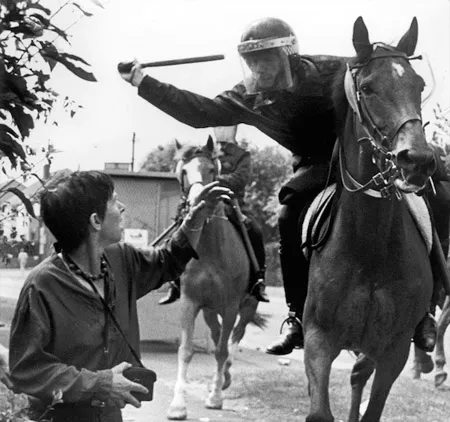
Marching Back to Work with Pride
The miners went back with their heads held high on 5th March, marching back to the collieries behind their banners. They had fought and fought hard. Ultimately, they were defeated but things would never be the same again.
The role of the state apparatus was clear for all to see. The full might of the police, MI5, and even the CIA were mobilised to break the NUM. The ruling class was prepared to go to any lengths to defeat the miners.
Violence against the miners was a routine occurrence. This was most clearly seen at the Battle of Orgreave where 3,000 police and 10,000 pickets clashed, and miners were literally beaten of the streets by cops on horseback wielding truncheons.
The Tories spent £6 billion during the strike to defeat the NUM and would eventually spend £26 billion in their deliberate devastation of an industry, and a community. Nigel Lawson described this as “a worthwhile investment for the good of the nation”, with preparations “just like rearming to face the threat of Hitler in the 1930s”.
It is important to study the events of the miners’ strike if we are to win the class battles of the future. Above all it illustrates the importance of activists organising in the unions and creating leaderships who understand how to mobilise the power of the working class in uncompromising battles with the government and big business.


